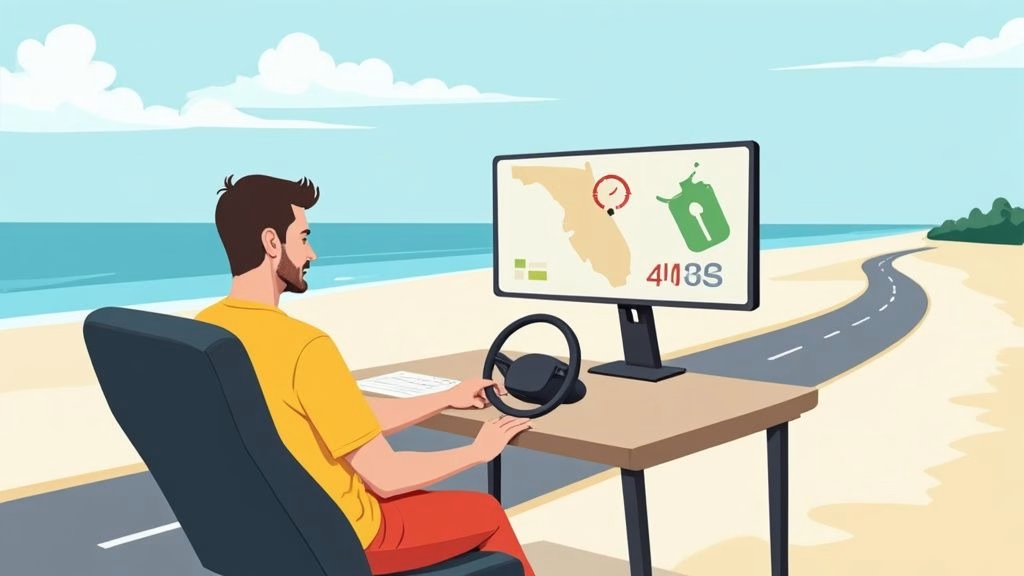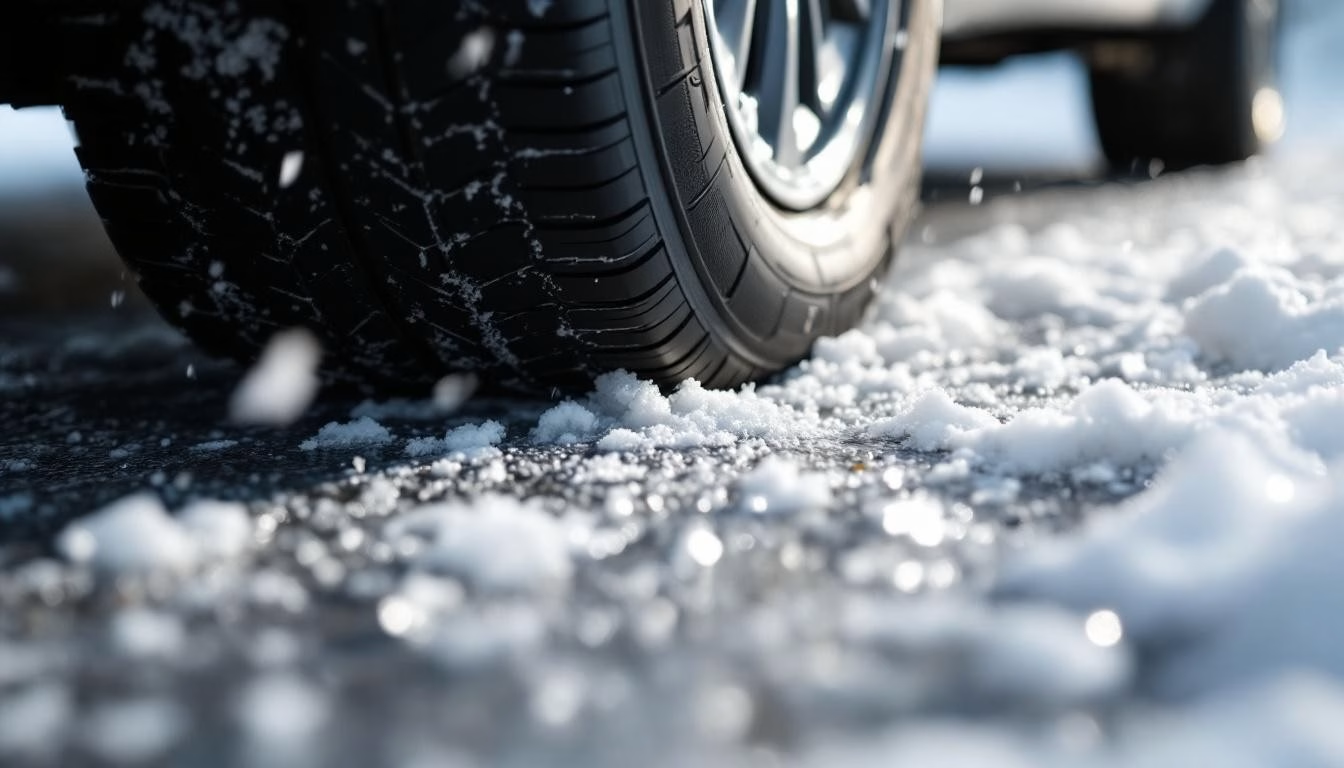Winter driving claims over 1,300 lives annually in the United States, with most accidents occurring due to inadequate preparation and poor technique.
We at floridadetscourse.com believe that mastering safe winter driving starts with understanding your vehicle’s limitations and adapting your skills to challenging conditions. The right preparation and techniques can dramatically reduce your risk on icy roads.
Essential Vehicle Preparation for Winter Conditions
Your vehicle needs three key upgrades before winter weather arrives. Winter tires make the biggest difference in safety and outperform all-season tires by up to 40% in snow according to the National Highway Traffic Safety Administration. The Pirelli Cinturato WeatherActive delivers the best dry performance while it provides excellent snow traction. Install winter tires when temperatures consistently drop below 45�F, as rubber compounds in regular tires harden and lose grip in cold conditions.
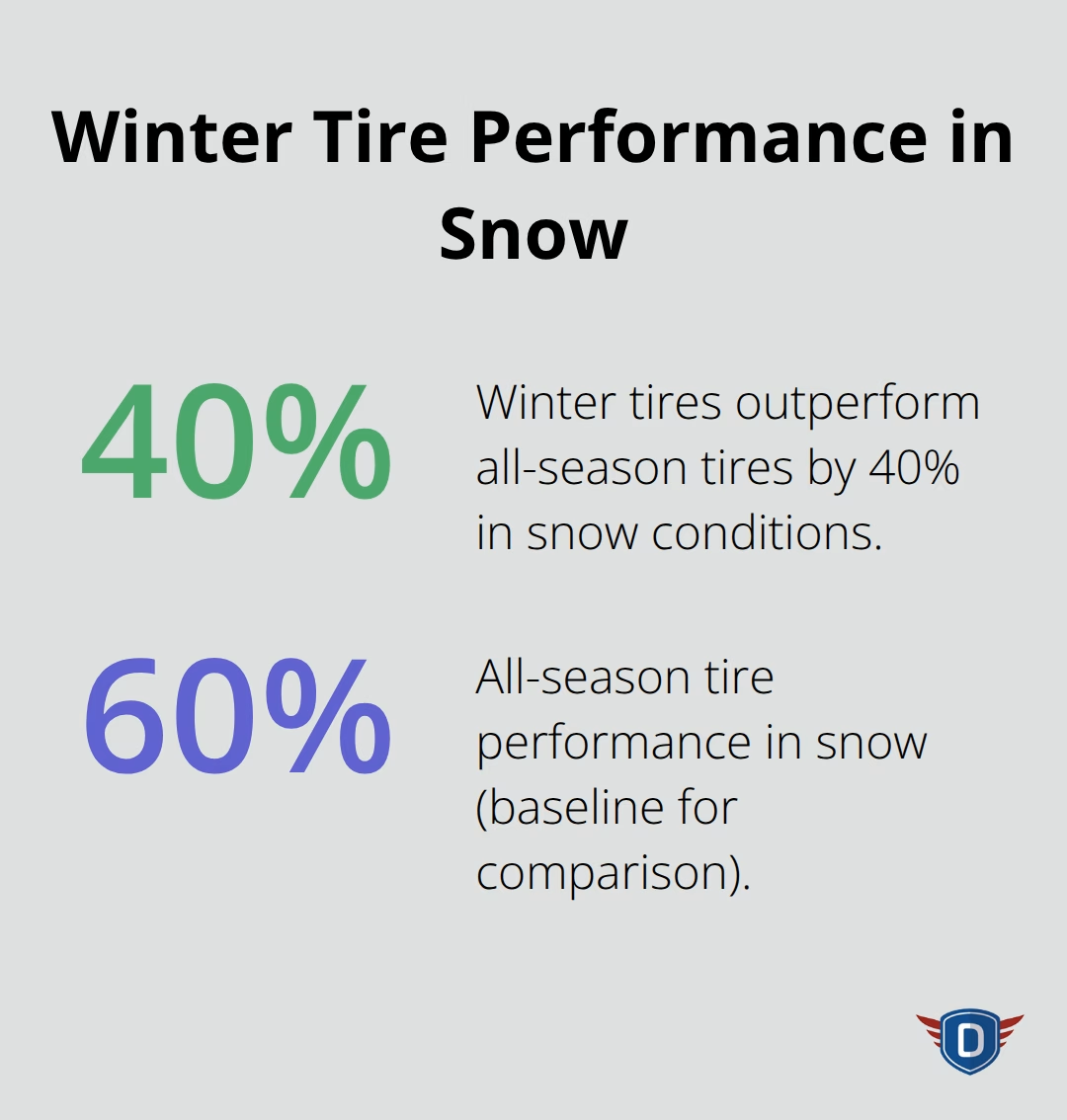
Tire Selection and Maintenance for Snow and Ice
Winter tires provide better stopping performance than all-season tires when braking on snow, with snow tires stopping at 181 feet compared to all-season tires which lag further behind. Check tire pressure weekly since cold temperatures drop pressure by 1-2 PSI for every 10-degree temperature decrease. Inspect tread depth monthly and replace tires when tread reaches 2/32 of an inch (the legal minimum). The three-peak mountain snowflake certification identifies true winter tires that meet enhanced snow performance standards.
Battery and Fluid Checks for Cold Weather Performance
Cold weather temporarily reduces battery performance, which causes most winter breakdowns according to AAA data. Test your battery’s cold cranking amps rating and replace batteries older than three years. Check antifreeze levels and test the mixture to prevent freezing at temperatures down to -34�F. Replace windshield washer fluid with winter-grade formula that won’t freeze, and inspect belts for cracks since cold makes rubber brittle.
Emergency Kit Assembly and Safety Equipment
Stock your vehicle with a shovel, jumper cables, first aid kit, blankets, water, and non-perishable food. Keep your fuel tank above half full to prevent fuel line freeze-up and maintain battery power for heat. Add road flares or reflective triangles for visibility if stranded. The Federal Highway Administration reports that proper emergency preparation reduces winter accident fatalities by 25% when drivers stay with their vehicles rather than attempt to walk for help.
These preparation steps create the foundation for safe winter travel, but even the best-equipped vehicle requires advanced techniques to handle slippery road conditions effectively.
Advanced Winter Driving Techniques
Winter roads require completely different control methods than normal conditions. Research shows that summer and early fall are actually the most dangerous times of the year for fatal crashes, highlighting how different seasonal conditions affect driving safety. Smooth steering inputs prevent loss of control when roads turn slippery.
Proper Steering and Braking Methods on Slippery Roads
Turn your steering wheel slowly and smoothly rather than making quick corrections. Apply brakes with steady, firm pressure instead of pumping them when your vehicle has anti-lock braking systems (ABS prevents wheel lockup and maintains steering control during emergency stops). The National Highway Traffic Safety Administration confirms that proper ABS use reduces winter accident rates by 18%. Avoid sudden steering movements that can break the limited grip between your tires and the road surface. Test your brakes gently in safe areas to understand how your vehicle responds to different road conditions.
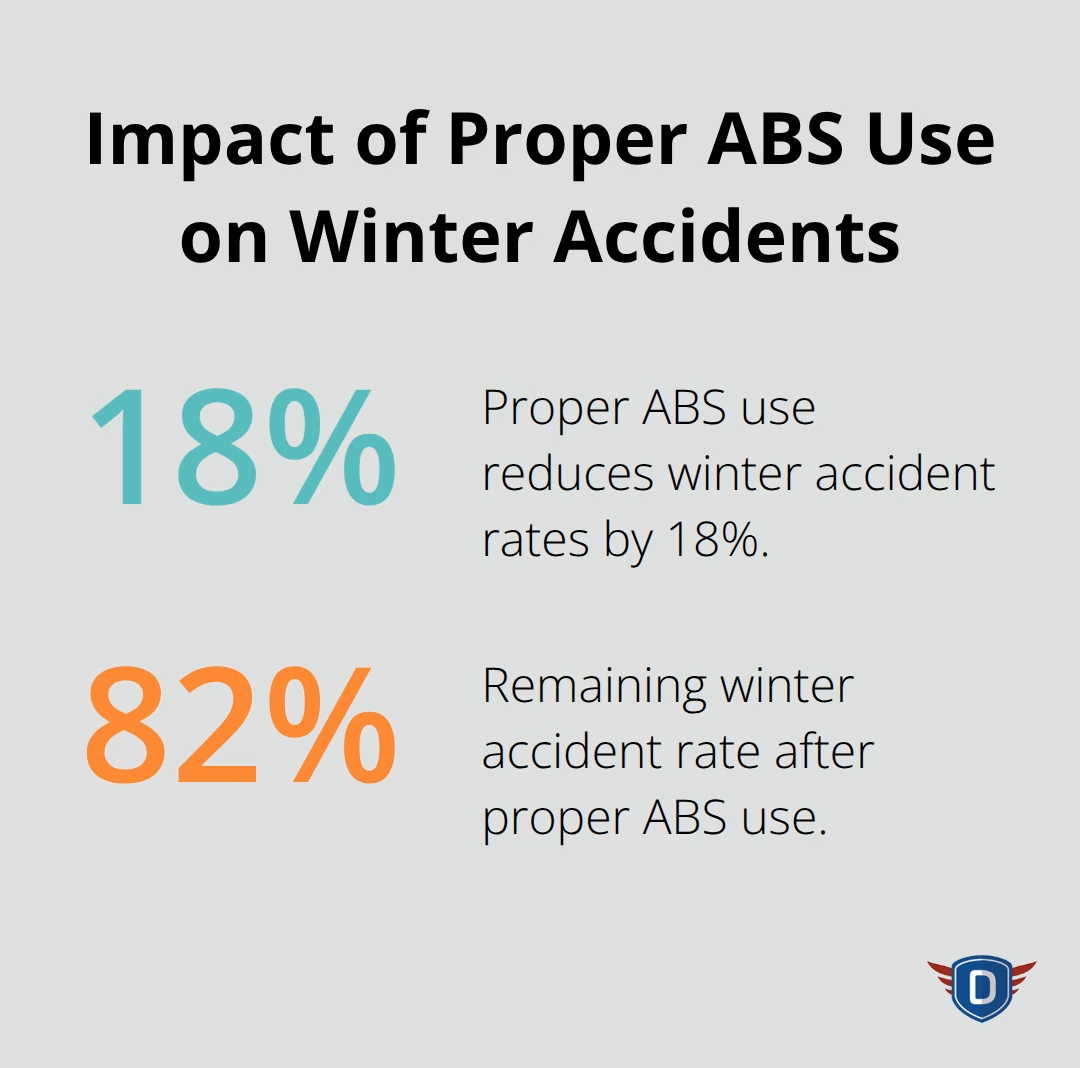
Managing Skids and Loss of Traction
When your vehicle starts to skid, steer gently in the direction you want the front of your car to go. Avoid slamming on brakes during a skid since this worsens the situation. Release the accelerator immediately and let your vehicle slow naturally. The American Automobile Association states that overcorrecting steering causes 45% of skid-related accidents. If your rear wheels slide out, turn the steering wheel in the same direction as the skid until you regain control. Front-wheel skids require you to ease off the accelerator and wait for the front tires to regain grip before steering.
Safe Following Distances and Speed Adjustments
Increase your following distance to at least 8 seconds behind the vehicle ahead on snow-covered roads. Snow and ice reduce pavement friction and vehicle maneuverability, causing slower speeds and increased crash risk. Reduce your speed by 50% when driving on packed snow and by 75% on ice. Accelerate and decelerate slowly to maintain traction (sudden movements break the grip your tires need most). These techniques become even more important when you encounter specific hazards like black ice and reduced visibility conditions. Defensive driving classes teach additional methods for handling these challenging weather situations safely.
Navigating Hazardous Winter Road Conditions
Black ice forms invisibly on road surfaces when temperatures hover near freezing, creating the most treacherous winter driving condition. This transparent layer of ice appears on bridges, overpasses, and shaded areas first because these surfaces lose heat faster than regular pavement. The Federal Highway Administration reports that 12% of weather-related vehicle crashes occur annually.
Snow storms reduce visibility to less than a quarter mile and create whiteout conditions that disorient drivers. The National Weather Service data shows that 70% occur in automobiles during winter weather events. Turn on your low-beam headlights and avoid high beams that reflect off snowflakes and worsen visibility. Pull completely off the road if visibility drops below 50 feet rather than continuing to drive.
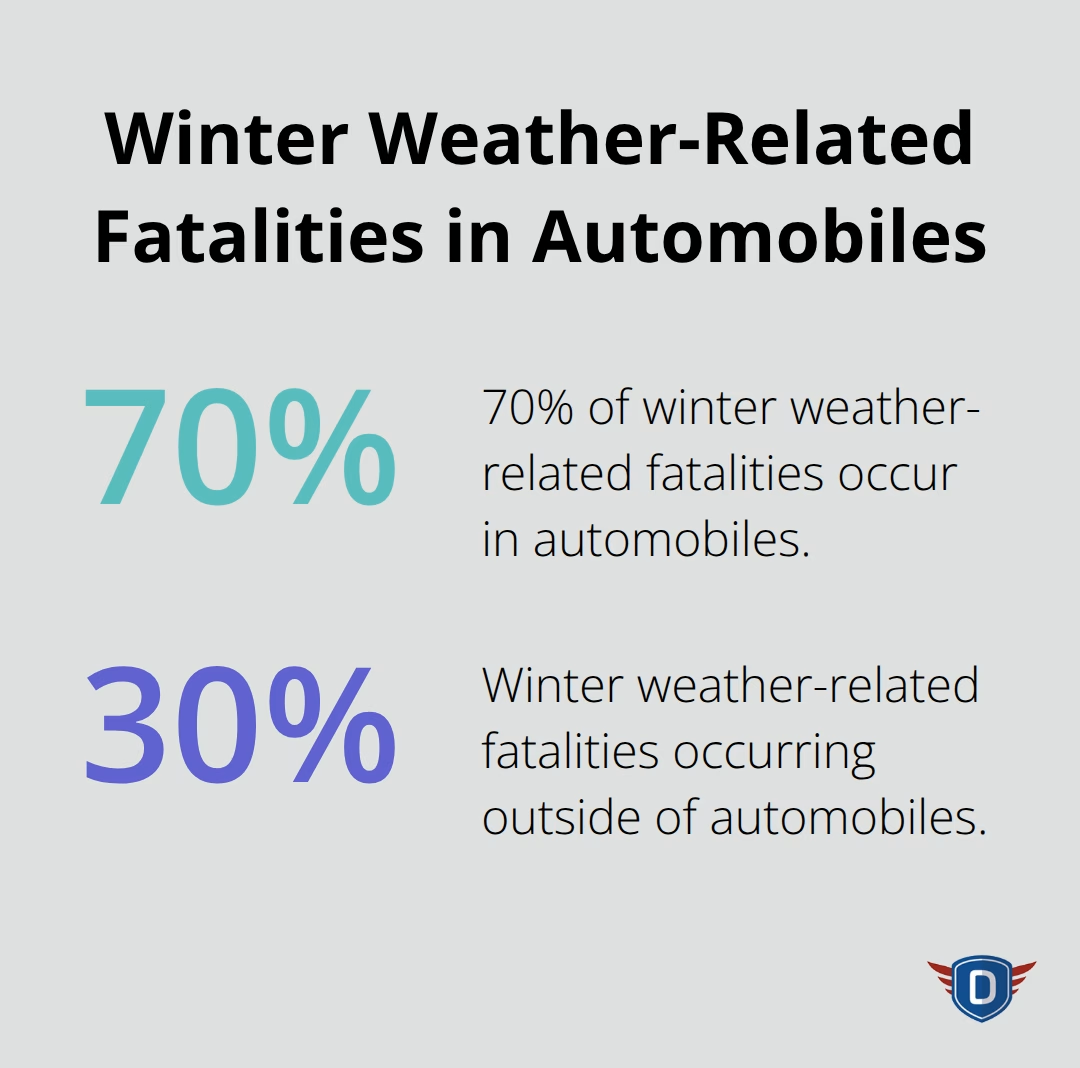
Identifying and Responding to Black Ice
Watch for visual cues like other vehicles sliding or unusually shiny pavement surfaces that indicate black ice presence. When you suspect black ice, avoid any sudden movements and maintain steady pressure on the accelerator. Test your brakes gently in safe areas to gauge road conditions. The ice often appears where shadows fall across the roadway or where water collects and freezes overnight (particularly dangerous during morning commutes).
Driving Through Snow Storms and Reduced Visibility
Keep your speed at least 10 mph below the posted limit and use your vehicle’s hazard lights only when stopped. Clear all snow from your vehicle’s roof, windows, and lights before you drive to prevent snow from sliding onto your windshield or other vehicles.
Safe Practices for Mountain and Hill Driving
Mountain roads amplify winter challenges through steep grades, sharp curves, and elevation changes that affect weather conditions. Approach hills with steady momentum rather than accelerating halfway up, which can cause wheel spin and loss of traction. Shift to a lower gear when you descend hills to use engine braking instead of relying solely on your brakes.
The Colorado Department of Transportation requires chains or snow tires on mountain passes when conditions deteriorate, and similar regulations exist in other mountain states. Keep tire chains in your vehicle and practice installation before you need them (roadside installation in freezing conditions becomes extremely difficult).
Final Thoughts
Safe winter driving becomes second nature when you combine proper vehicle preparation with practiced techniques. The statistics speak clearly: drivers who prepare their vehicles and adjust their methods reduce their winter accident risk by significant margins. Your winter tires, emergency kit, and fluid checks create the foundation, but your control and speed adjustments determine your safety on the road.
Practice these techniques in empty parking lots before winter weather arrives. Start with gentle brake tests and smooth inputs on dry pavement, then progress to wet conditions. This preparation builds the muscle memory you need when real emergencies occur on icy roads (especially during sudden weather changes).
We at floridadetscourse.com teach advanced techniques for challenging weather conditions through personalized guidance from certified instructors. Our comprehensive driver education programs help drivers develop confidence with safe winter driving skills. Professional instruction combined with personal practice creates drivers who handle winter roads safely throughout the season.



